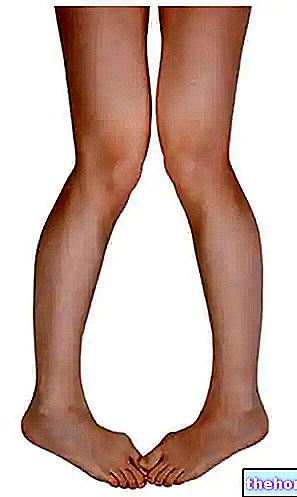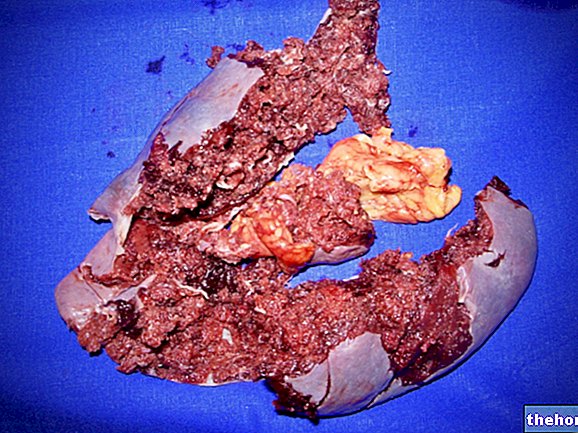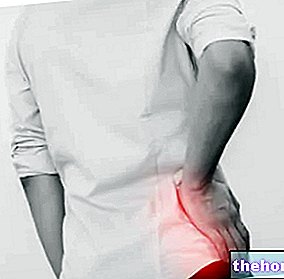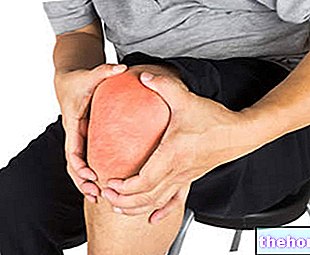Locomotion is the ability of animal organisms to move, moving from place to place.
Movement is made possible by the anatomical conformation of the skeleton which is set in motion by muscle contraction. Other anatomical structures (tendons, nerves, ligaments, etc.) participate in the movement, forming together the so-called locomotor system.
The locomotor system is in turn composed of three distinct systems or systems:
- skeletal system constitutes support and insertion for the muscles and protection for the internal organs. It is a PASSIVE system in movement: they are the skeletal segments that are moved as a result of muscular action.
- articular apparatus constituted by the regions in which the bone segments face each other with the relative annexes
- muscular system. It is the active element in the mobilization of the locomotor and confers the movement of the viscera and their portions.
Each of these systems can undergo more or less serious injuries over a lifetime and, while some heal spontaneously, others require surgical and / or pharmacological intervention.
We list below the most frequent injuries of the locomotor system.
Traumatism of the bone system
1) FRACTURES: by fracture we mean a break in the structural integrity of a bone.
Traumatic fractures are distinguished, in which the trauma acts on a normal bone, and pathological or spontaneous fractures, which are produced by weak traumas capable of overcoming the resistance of an altered bone, but not that of a normal bone. Fractures can be located exactly in the point where the causes have exerted their action (direct fractures) or, on the contrary, reside in a more or less distant point (indirect fractures). They are called complete if there are two or more distinct fragments, otherwise they are incomplete and in this case they can be exposed or covered, depending on whether or not there is a discontinuity of the overlying soft parts; finally we speak of comminuted fractures, when the bone is reduced in multiple fragments or splinters.
Therapy: it must aim to obtain a bone scar called a callus and can be summarized in two words: reduction, restraint.

In any case, the reduction of fractures must be carried out as soon as possible after the injury (before there is too much swelling of the soft parts and a start of reworking of the bone ends), under radiological control, and, in general, under local or general anesthesia; this suppresses the pain felt by the injured person when the bone fragments are mobilized and decreases the resistance opposed to the surgeon's effort by the contraction of the muscles that approach the fracture.
After reducing the fragments it is necessary to maintain the reduction: this is done with the help of some devices that ensure the absolute immobility of the fragments; the simplest devices are formed by flexible and resistant plates (splints) that are applied along the fractured limb. to keep it immobile: these splints are generally made of wood or flexible or rigid metal, circular bandages will be avoided, since the tissues, swelling, would be too compressed. In urgent cases, the slats can be replaced with pieces of wood.
In short, it is a question of improvising two wide lateral defenses which rise over the entire length of the limb, in order to immobilize the two joints above and below the fractured part.
It is also possible to use cushions that are used to isolate the splints from the limb and the bandages that surround the limb, which are designed to keep the different parts in contact and to form a whole. Several mobile bandages have been reported, which use these elements: the main ones are the spiral bandage, the sculpture apparatus. "last thus taking the place of a splint, for the arm, the side of the chest will serve as a defense.
Whenever possible, immovable appliances are preferred to fixed appliances, which are generally made of plaster.
The plaster is cut according to the region to be cast in circular bandages, in strips or in showers. These plaster appliances must be monitored in the days following the application, as they can be too tight and cause local compression, very frequent at the height of the heel and ankles. They can also give rise to pain and be the cause of eschar. Sometimes instead they become too loose when the limb deflates and becomes thinner; then the displacement occurs, hence the need to remake a new apparatus.
The duration of the application of these devices is variable for each fracture.
The annoyance of all these devices, whether mobile or immovable, is that ankylosis and muscle atrophy are not long in coming. To avoid them, it is necessary to immobilize the joints as little as possible and, subsequently, to resort to massages and electricity.
Currently there is an increasing tendency to treat fractures surgically, in which the plaster results in insufficient immobilization of the fragments. The main procedures adopted are bone suturing, osteosynthesis, entanglement and in the most serious cases, nailing is used.
The latter, also called screwing, is a method that allows two fragments of spongy bone to be made integral in the cavity of which a nail is fixed which joins the two divided parts of bone.

3) EMOTION: shock produced in the body by a fall or a violent impact, there are therefore two types of emotion:
"electric concussion" when you have a contraction caused by an electric current and "concussion" when you have loss of consciousness, generally transient and reversible, which does not produce permanent damage but can degenerate into a coma.
Cranial traumas always expose the risk of damaging the brain more or less severely. Therefore, in the hours following the trauma, the signs of a cerebral contusion, a hematoma and other more or less serious characteristics that require more in-depth examinations and a surgical operation can be observed.
Injuries to the muscular system
CONTRACTURE: Continuous and involuntary contraction of one or more muscles, the rigidity of which is such as to form hard cords, appreciable under the skin. When it hits a limb, it immobilizes it in more or less strong flexion or extension; to the face, it does not allow to open the jaw. The contracture can come on suddenly or follow convulsions or paralysis of the muscles. It ceases under the action of chloroform, which distinguishes it from muscle retraction, in which there is the alteration of muscle fibers, while in contracture there is simply an exaggeration of function. Contracture is often painful.
CONTUSION: lesion produced by a bump, without the continuous solution of the skin and with blood transfer.

TEAR: partial or total laceration of fibers of a muscle, following violent movement.
STRETCHING: excessive stretching, beyond the physiological threshold, of the muscle fibers.
Injuries to the articular apparatus:
DISTORTION: Injury of a "joint, due to a forced movement and which is accompanied by elongation or rupture of the joint ligaments, without following a permanent displacement of the joint extremities. It is the first stage of a dislocation or, if desired, a dislocation The sprain is characterized by ligament injuries, joint capsule and synovium injuries, and especially vasomotor disturbances, brisk pain, local heat, swelling (bruising) and noticeable hydrarthrosis.

Therapy: in sprains without severe ligament injuries, local infiltration of novocaine was recommended, which eliminates pain and vasomotor disturbances and allows immediate use of the limb. The massage, followed by a bandage, is proposed. same purpose. If there are ligament injuries, we must not resume walking, but immobilize them with plaster. Physiotherapy, hydromineral treatments can be used to combat the after-effects.
LUXATION: permanent displacement of two joint surfaces, due to external violence, or to alteration of the tissue of one of the parts of the joint. Depending on whether the relationship between the joint surfaces is completely or partially suppressed, the dislocation can be complete or incomplete ( sub dislocation). Sometimes the injury is limited to an opening of the joint capsule and the partial rupture of the ligaments, but often these are torn and can also remove bone fragments; the muscles are violently bruised; a blood effusion is formed. returns to place after reduction of the dislocation.
Symptoms: pain on a very large surface, exasperated by movement, attenuated by immobility; deformation, particular attitude of the limb, whose length is modified (shortening or lengthening); abolition of active movements while some passive movements remain (exaggeration of the abnormal situation of the limb) and of abnormal movements.

Therapy: do not try to reduce the dislocation, as this is a delicate maneuver that only a doctor will be able to do. Trying to reduce the dislocation can tear vessels and nerves and cause a fracture. For the reduction, the doctor uses, depending on the case and according to whether the dislocation is more or less recent: o gentle maneuvers, which consist in methodically pressing on the displaced part, in order to push it towards the normal joint cavity, or force maneuvers . With the latter the body is kept solidly still (counter-extension), then a traction effort is made on the dislocated limb (extension), either directly or by means of an elastic lace. The reduction then occurs naturally or with a surgical intervention. Anesthesia allows you to overcome muscular endurance. In cases of irreducible dislocation (by interposition of muscle or tendon parts between the joint surfaces) or of long-standing dislocations with adhesions, it is necessary to resort to surgery (bloody reduction). After the reduction, immobilization is required for a variable period of time.
Paramorphism: acquired alteration of the external shape of the body and its usual functional attitudes, due to asthenia and hypotonia of the muscles and ligaments.
PARAMORPHISMS OF THE VERTEBRAL COLUMN:
SCOLIOSIS: Scoliosis involves a lateral displacement of the spine
Kyphosis: kyphosis involves an exaggerated dorsal curvature
GROSS: in lordosis there is an "accentuation of the lumbar curvature"
In all three cases mentioned, it is necessary to intervene early with gymnastics and, possibly, with special corsets to prevent the malformation from becoming definitive. The control of the foot structure is also very important for the harmonious development of the entire skeletal structure, which, being the "base" of the body, directly influences the conformation and arrangement of the supporting bone elements. normal foot, the weight of the body is supported in the arch. However, there may be cases in which the arch of the foot is not well shaped and in this case the situation of "flat foot" occurs. To avoid this defect, a correct gait setting is required but, above all, a careful choice of footwear. . Shoes that are too tight at the toe or with exaggeratedly high heels force the feet to assume a forced position by compressing or deforming them. We recommend, therefore, heels no higher than 2cm for children, and no more than 6cm for adults, and possibly the presence of insoles that keep the arch of the foot sufficiently raised.
FOOT PARAMORPHISMS:
FLAT FOOT (described above)
VARISM: position anomaly whereby the longitudinal axes of two contiguous skeletal segments or of two parts of the same segment do not coincide on the frontal plane (imaginary plane that passes tangentially to the forehead), but form an internal angle between them with respect to the midline of the body. The opposite anomaly is valgus.
VALGISM: defective attitude of two contiguous skeletal segments (or of two parts of the same segment) for which their longitudinal axes do not coincide on the frontal plane (imaginary plane tangential to the forehead), but form an angle open towards the outside (with respect to the line median of the body). The opposite anomaly is varus. The causes of valgus are various: congenital malformations, rickets, poliomyelitis paralysis, trauma. Particularly important are valgus of the knee (knee valgus) and of the femoral neck (coxa valga).
KNEE PARAMORPHISMS:
1) VARISM (see varus in foot paramorphisms)
2) VALGISM: (see valgus in foot paramorphisms).




























